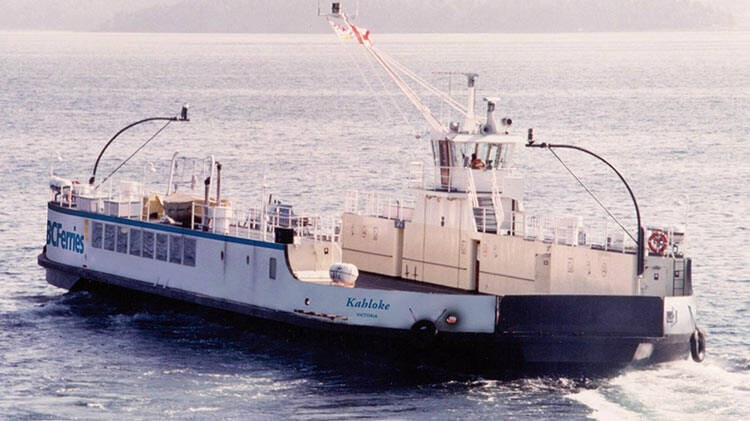Hornby Island residents are clear about what is needed to avoid a repeat of the hours-long, multi-sailing waits seen last summer: a new ferry on the route — tomorrow, if possible.
“We have been asking for a larger-capacity ferry for years because of our huge lineups,” said Kent Lukinuk, vice-president of the Hornby Island Residents and Ratepayers Association. “We have the worst performance metrics of all the small islands in B.C. Ferries’ system.”
It is time to take the 179-foot long Kahloke ferry, which can carry 21 cars and 200 passengers and crew, off the run between Denman and Hornby islands, he said.
The larger 254-foot-long Quinitsa, able to carry 44 vehicles and 300 passengers and crew, will be available on Dec. 7, said Lukinuk, who suggests it immediately go into service on the Hornby-Denman run.
The Hornby Island Community Economic Enhancement Corp. spent $1,500 to commission a short video illustrating the problem. It shows vehicles lined up on local roads waiting for the ferry.
Lineups can stretch for more than a kilometre on narrow rural roads and last for several hours, Lukinuk said. Local traffic ends up driving on the wrong side of the road, where it meets off-loading vehicles and local traffic, creating a hazard.
Residents have lobbied B.C. Ferries and provincial officials, with no result, he said. “We are now desperate.”
Tribune Bay’s white sand beach is a main attraction for the thousands of visitors who flock to picturesque Hornby Island — population 1,200 — each year.
Visitors and residents typically catch the Baynes Sound Connector cable ferry at Buckley Bay on Vancouver Island to Denman Island. From there, they drive across the island to catch the Kahloke from Denman’s Gravelly Bay to Shingle Spit on Hornby.
Residents have difficulty getting to medical appointments on Vancouver Island because the ferry is so busy, said Lukinuk, and commercial vehicles are stymied by the crush of travellers.
Further exacerbating the problem is the Kahloke’s weight carrying capacity, which was reduced in November 1991.
Weight issues cause problems for both personal vehicles and commercial vehicles. Heavy trucks carrying construction materials, for example, can limit how many other vehicles can board.
“What is happening now is the ferry is running with empty deck space because it is weighted out with trucks or large vehicles,” Lukinuk said.
Two weeks ago, a cement truck driver had to give up and leave the lineup to Hornby after being unable to board two sailings and reaching the time limit for the product to be viable, he said.
The population is rising, construction increasing and the economy on the island is trying to move ahead but the ferry system is “strangling” Hornby, Lukinuk said.
A petition calling for improved ferry service topped 2,000 signatures and was sent to B.C. Ferries and provincial officials in September.
Karen Ross, the island’s economic enhancement officer, said the “lack of adequate ferry service” is hurting the ferry-dependent community.
“Some suppliers and trades are refusing to come to the island,” she said. “Others are increasing their costs to cover ferry waits and delays.”
B.C. Ferries has acknowledged the problem, saying it is planning to deploy a larger ferry next summer, but there has been no firm commitment, Ross said.
And although it appears that Hornby is in line for a new Island-class vessel in 2034, that is too long a wait, she said. “We want some immediate remedial action for our route.”
B.C. Ferries Services Inc. has submitted a report to the B.C. Ferry Commission noting “several of B.C. Ferries’ routes have challenges accommodating the current and forecast levels of demand, particularly at desirable travel times of the day and during peak summer travel periods.”
This has resulted in communities and customers “expressing frustration and a need for increased capacity.”
In the near term, the report recommends putting the Quinitsa on the Denman-Hornby route in the summer. In the mid-term, it would go on that route year-round.
As for the Buckley Bay-Denman route, Kahloke would serve it as well as the cable ferry. In the medium term, the cable ferry could be expanded to carry a higher capacity, the report said.
Ross said residents want a long-term ferry — not just a summer fix.
“We want it sooner,” she said. “Obviously we would like them to extend that into the heavily used shoulder seasons and not just the peak months.”
>>> To comment on this article, write a letter to the editor: [email protected]



